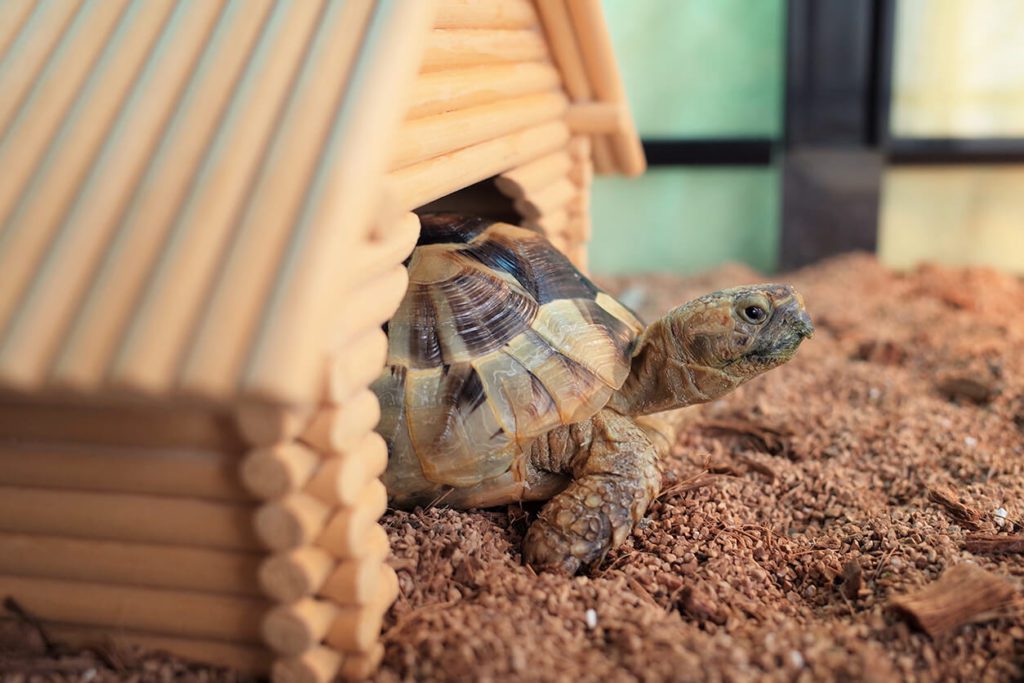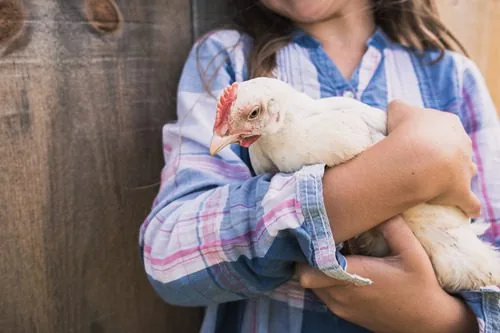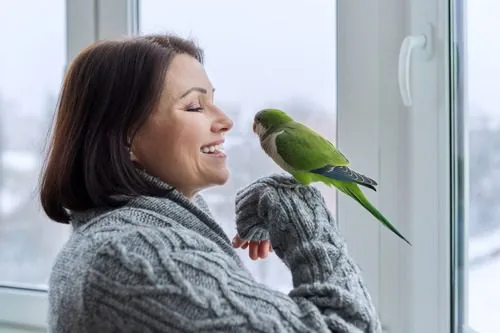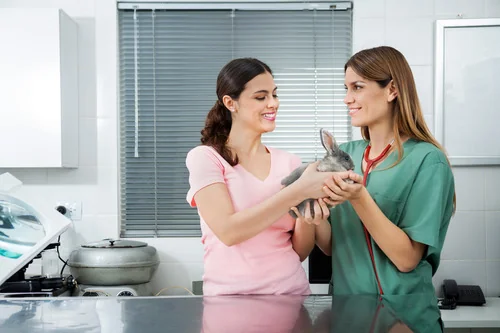How to Care for Tortoises
While tortoises may seem to be a fairly low maintenance pet, in reality, tortoise care is probably a bit more than you think. There’s specific dietary requirements, housing and lighting tortoises need in order to maintain a happy, healthy life inside your home or in an outdoor environment. The following article will explain the important things you need to know in order to take proper care of a tortoise.

A Tortoise is Not a Turtle
The first thing to know about tortoises, is that while they might look similar, there are major physical and biological differences between Tortoises and Turtles. They’re both chelonians (reptiles of the order Chelonia), so they look similar, but there are important considerations for each.
Tortoises are found all over the world existing in a wide variety of habitats, from deserts to rainforests and everywhere in between. They do not need to exist in a water-rich environment, and really only need it for drinking and the occasional soak. They do not live in the water and in fact, are not well adept at swimming. They also stand higher up on all 4 legs than turtles and ambulate in a more upright way so it’s easier for them to move across dry land. Their diet consists primarily of green leafy vegetation with the occasional insect, and their shells are dome shaped.
Turtles can survive only in places where water is readily available. In fact, they spend most of their lives in the water and often just come out to feed, lay eggs, or occasionally sunbathe. Their bodies are built for efficient swimming- with flatter, smoother shells and webbed feet. They are more omnivorous than their dry-land relatives, eating small fish and crustaceans, and some vegetation.
Why Does It Matter?
Knowing the difference between a turtle and a tortoise is important when considering what type of chelonian you want as a pet. In this article, we’ll specifically address the care considerations for tortoises.
Land Lubbers
Tortoises do not tolerate aquatic environments, and should never be forced to live in a habitat where contact with water is constant and unavoidable. They should, however, always be given access to fresh water (changed at least once a day) but this should be available in a dish with somewhat raised edges. Most pet stores have appropriately sized containers that the tortoise can still reach into to drink, or slide into for a quick bath.
Cold Blooded- Check it and See
As part of the reptile family, tortoises are not a creature that can regulate their own body temperature. This means they need an external heat source. Lots of owners gravitate toward heated rocks, or place heat pads under enclosures. While this might seem like a good idea, the fact is more tortoises fall victim to burns from these sources than from most other heat sources.
The ideal is actually to heat the air within the enclosure, using a heat lamp. Daytime temperatures for tropical tortoises can range from 80 to 85 degrees Fahrenheit while desert tortoises can tolerate temps up to 90 degrees. Night time temperatures should be no less than 70 degrees Fahrenheit.
Also, it is important is to give the tortoise a place to escape from the heat if they want to. This can easily be achieved by placing the heat lamp at one end of the enclosure, and something on the other end to provide a physical barrier and some shade. Most pet stores carry little faux caves that would suit this purpose. Just make sure it’s big enough for the tortoise to enter and move around comfortably.
Speaking of Space…
Turtles need generously sized enclosures to live happy lives, and it’s ideal to grant them supervised outdoor access too. Small tortoises need terrariums that have at least a 40-gallon capacity. They should have access to a water dish of some kind, and various interesting items to interact with. The enclosure needs to be wide and long enough for them to move around all obstacles freely.
Russian, Greek and Red Foot tortoises can generally be maintained in inside enclosures as they generally do not get bigger than 8-15 inches. Sulcata tortoises (African Spur Thighed Tortoises) can reach 2 feet in length and 40-60 pounds by 15 years of age and 3 feet in length and 100 pounds by age 20-30.
Bedding
Because there are a wide variety of tortoises that can serve as pets, it’s important to research their individual needs in all areas, including housing, diet and lighting. Some tortoises prefer soil or sand, others will do better in bark or other bedding types. Bedding needs to be changed out on a 2-3 times a week basis to avoid buildup of secondary chemicals and bacteria from the breakdown of waste.
And What Do They Eat?
Tortoises thrive on a diet that consists largely of vegetation, with some insects, too. This is also somewhat dependent on the species so it’s important to research your tortoise’s needs. There are commercially available tortoise feeds but these should be used as a supplemental source of nutrition, not the primary dietary source. They can also be given Timothy hay to munch on.
Their primary source of nutrition though, should always be fresh produce- Dark, leafy greens are ideal, supplemented by a variety of other colorful veggies. Even sweet potatoes and squash can be offered. Fruits are fine to give on occasion, but should only be given in relatively small amounts.
Let There Be Light
One of the most important considerations for tortoise care is UVA/UVB lighting. These UV rays are essential for the body to produce Vitamin D, and Vitamin D is essential for appropriate calcium absorption from the diet and proper bone health. Failure to provide UVA/UVB lighting can lead to metabolic bone disease, which is a dangerous and fatal disease that causes bones to degrade and even break.
Even in climates where daytime sunlight hours are greater, supplementing will be necessary for tortoises that are primarily in indoor enclosures. Being set next to a window isn’t enough, even if it’s warm and sunny- the glass from the window and the glass from the enclosure will filter out ultraviolet light.
If the tortoise spends a lot of time outside, that might be adequate, but in climates that are cooler and less sunny, areas with lots of cloud cover or shorter daylight hours, supplemental UVA/ UVB lighting is necessary. There are multiple bulb options available, and the best quality bulbs are provided by popular name-brand manufacturers. Make sure all light and bulb fixtures and accessories are labeled for use with reptiles. Choose a setup that’s appropriate for the enclosure size.
Not Just Easy Pets
Because there aren’t litter boxes, poop bags, or brushes involved in their care, people often mistake tortoises for an “easy” pet. But the truth is that a lot of maintenance is involved in providing ideal care for these unique little or in the case of an adult Sulcata Tortoise – very large creatures. Carefully consider your lifestyle, space, and financial means before investing, and as always, do some research to make sure you’re not caught off guard by your new pet’s care requirements.
Let Our Exotic Animal Hospital in Metairie, LA, Help
Tortoise care also includes regular exams with their veterinarian. At our exotic animal hospital, Dr. Gregory Rich and Dr. Leslie Pence are highly skilled and wonderful with all sorts of exotic animals, including tortoises. If you are ready to schedule your tortoise’s wellness exam, give us a call at (504) 455-6386 or request an appointment with our team.
Recent Posts
About Avian & Exotic Animal Hospital of Louisiana
Avian & Exotic Animal Hospital of Louisiana, formally West Esplanade Veterinary Clinic, is Louisiana’s only veterinarian that provides care exclusively to avian and exotic pets. From parrots to rabbits and ferrets to a wide variety of reptiles, as well as a multitude of small mammal exotic pets, we welcome them all to our practice!





